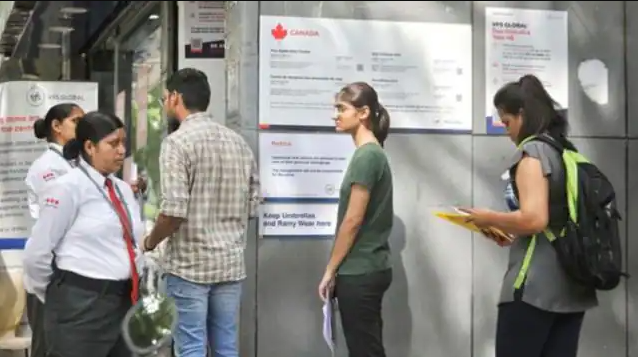Canada recently announced the suspension of its Student Direct Stream (SDS), a fast-track visa program that enabled quicker processing for international students, particularly those from India. This policy shift comes at a time when Canada is one of the most popular destinations for Indian students, making the news a significant setback for prospective applicants. The SDS program’s pause is likely to have widespread implications for Indian students and the educational industry in Canada.
Understanding Canada’s SDS Program
The Student Direct Stream (SDS) program was launched to simplify and speed up the visa application process for students from select countries, including India, China, the Philippines, and Vietnam. Indian students, the largest contingent in this program, could benefit from expedited processing times, typically under 20 days, provided they met specific requirements like high English proficiency and proof of financial capacity. The SDS offered a streamlined process that was less cumbersome than the regular student visa application, allowing students to plan their academic futures more confidently.
Why Canada Suspended the SDS Program
The abrupt pause in SDS processing stems from various concerns, with the most pressing being the increased scrutiny over fraud and immigration backlogs. Canada’s immigration authorities have expressed concerns over fraudulent applications and individuals misusing student visas as a pathway to Canadian residency rather than for educational purposes. This issue, combined with a surge in student applications and strained processing resources, prompted Canada to reevaluate and temporarily halt the fast-track process.
Canadian immigration has also faced an overwhelming backlog, largely due to increased demand from international students. The COVID-19 pandemic created processing delays that are still being managed, with many students experiencing lengthy waits. By suspending the SDS program, Canada aims to address these backlogs and ensure more rigorous checks are in place.
Impact on Indian Applicants
The SDS program’s suspension is a considerable setback for Indian students who relied on its fast processing for seamless admission into Canadian universities and colleges. With no SDS, students will likely face longer wait times for visa approval, resulting in potential delays or even missed academic terms. Additionally, the shift means that applicants must follow a more stringent application process, which could require more time and documentation.
For many Indian students and their families, studying in Canada represents a considerable financial investment, often covering high tuition fees and living expenses. The delay and uncertainty caused by the SDS suspension may discourage some students from pursuing Canadian education, potentially pushing them to explore alternative destinations like the United States, the United Kingdom, or Australia, where immigration processes may be more stable.
Economic Implications for Canada
The pause on SDS visas may have broader implications for Canada’s educational sector and economy. Indian students constitute a significant portion of the international student population in Canada, bringing in billions of dollars annually in tuition fees and related expenses. According to a 2022 report, international students contributed over CAD 22 billion to the Canadian economy, with Indian students comprising nearly 35% of that amount. A drop in Indian applicants could have far-reaching economic impacts on Canadian universities and communities that rely heavily on this international demographic.
Moreover, the reduction in Indian students may lead to a talent gap in Canada’s workforce. Many Indian students remain in Canada after graduation, taking advantage of post-study work opportunities that allow them to contribute to the labor market. This has been especially critical in sectors experiencing labor shortages, such as IT, healthcare, and engineering. A decline in Indian student enrollments could hinder Canada’s future labor market supply, affecting its long-term economic growth.
Prospective Changes and Alternatives
Canada’s immigration authorities have not provided a clear timeline for the reinstatement of the SDS program, leaving future applicants in limbo. Meanwhile, students are encouraged to apply through regular student visa processes, though this will likely extend processing times. Some experts suggest that Canada may implement more stringent screening measures or adapt new technologies to detect fraudulent applications, which could ultimately allow SDS to resume under tighter guidelines.
For students facing delays, considering alternative countries for higher education may be worthwhile. Countries like the UK and Australia have recently streamlined their student visa processes and offer work opportunities similar to those in Canada. Additionally, Indian students could explore emerging educational destinations in Europe, which are increasing their English-language offerings to attract international talent.
Conclusion
The suspension of Canada’s Student Direct Stream program marks a significant challenge for Indian students aspiring to study abroad. With longer visa processing times and heightened requirements, many students may find themselves reconsidering their plans. While Canada may seek to restore the SDS program with new measures to prevent fraud, the current situation introduces uncertainty in one of the most sought-after pathways to Canadian education. Both students and educational institutions will be watching closely, as the program’s future may shape international study trends and impact Canada’s role as a leading education destination.










